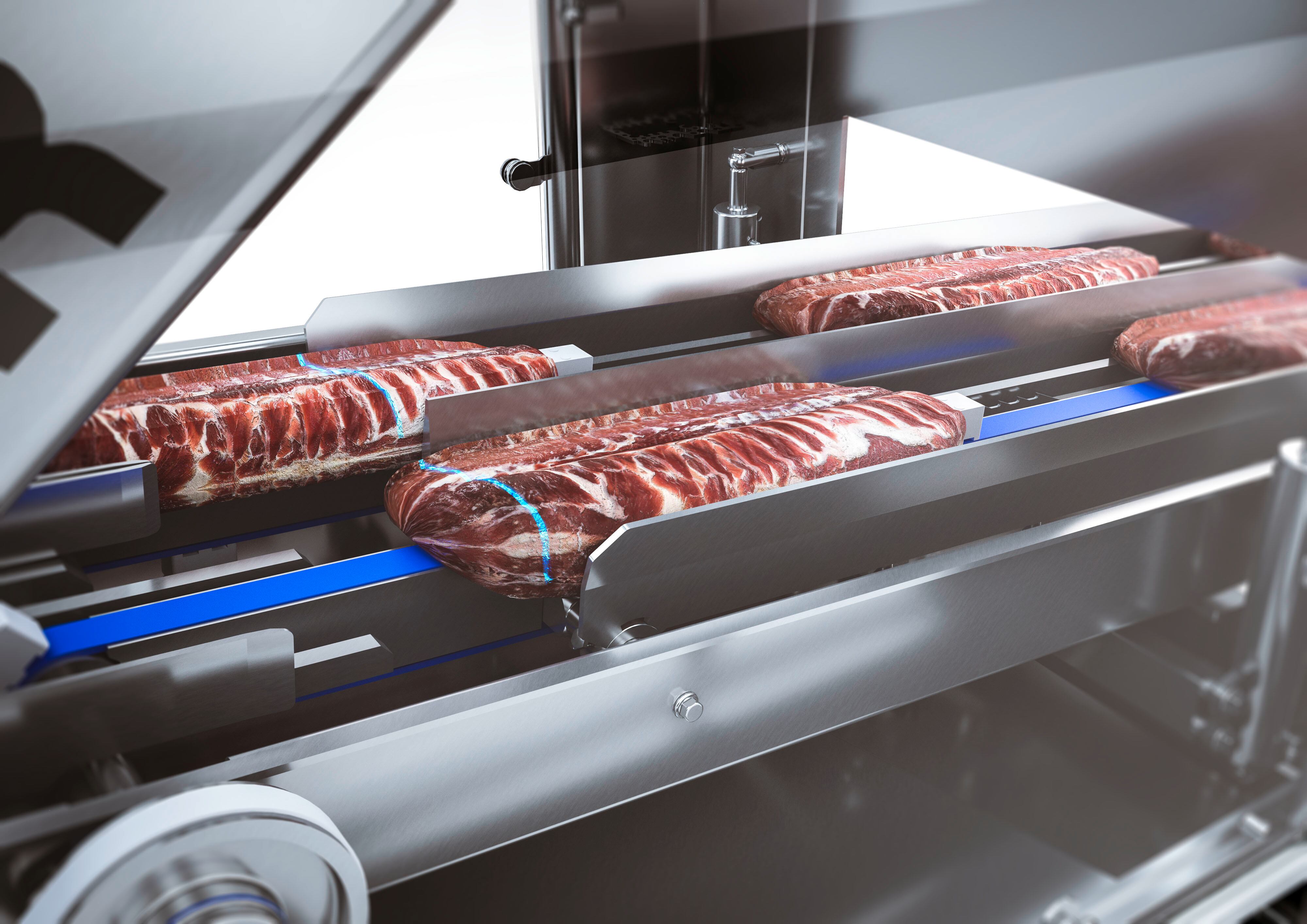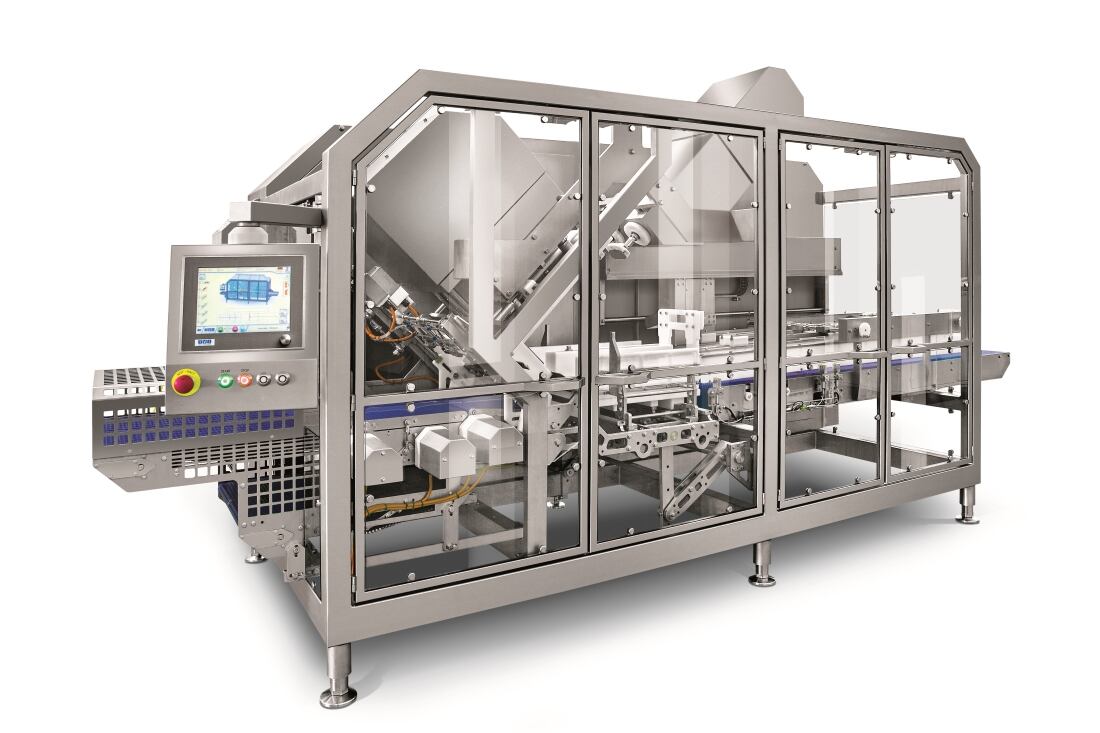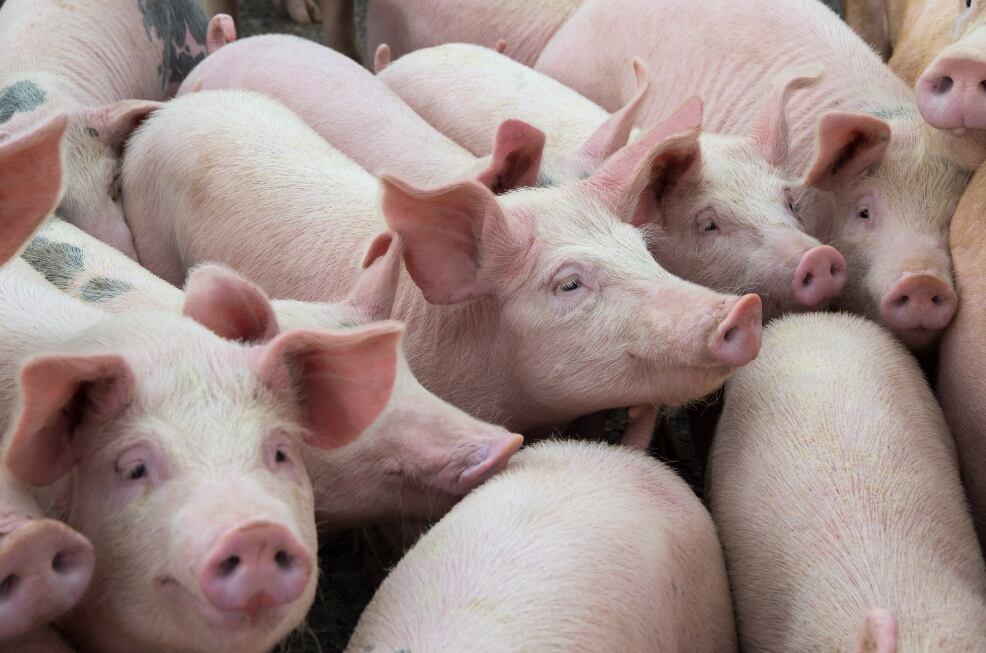A comeback for fresh pork sales in the UK and an export boost related to China’s African swine fever (ASF) outbreak are the success stories of the pigmeat category over the past year. The biggest loser has been bacon, with consumption occasions on the decline.
“We have seen an increase in frequency in buying fresh pork and volume,” says Mike Wijnberg, group technical director at Tulip. “This performance is even stronger, taking into account a late Easter, which could have affected sales.”
At first glance, the fortunes of fresh pork appear to be in stark contrast to bacon. But by drilling down into the respective markets, a more complex picture emerges. Despite its troubles, bacon remains the UK’s most popular pork product and, aided by ever more innovative cuts and packaging formats, the premium end of the market is emerging as a leading growth sector.
Fresh pork was up 1.7% in value and 2.8% in volume for the 12 weeks to 24 March, outperforming 0.8% growth in value and 1.4% in volume for the 52-week period, according to Kantar data.
Nathan Ward, business unit director at Kantar, attributes the growth to “bigger baskets and a strong performance from pork shoulders and marinades”.
Is African swine fever now a global epidemic?
While China has been the country most hit by African swine fever (ASF), it’s not the only one affected by the disease. And, what’s worse, ASF is moving ever closer to the UK. Over the past 12 months, every province in China has had at least one recorded incident of the disease, leading to Rabobank predicting a 35% drop in pork production in 2019.

Closer to home, the disease has cut a path through Europe, taking in Hungary, Bulgaria and, possibly most worryingly, Belgium – although farmers in the country haven’t located it in the production herd. This spread has led to countries like Poland, Denmark and, most recently, Luxembourg planning ‘border walls’ to halt the epidemic in its tracks.
Given Denmark’s reliance on the pork industry, just one incidence of ASF would be devastating and it’s little wonder that the country’s Government and meat industry have invested in protecting its borders. In the UK, AHDB Pork and the National Pig Association have taken steps to inform domestic producers on the signs they should look out for.
Europe is not the only region attempting to defend itself against the disease. Brazil recently set up a task force to examine ways of preventing ASF reaching its pigs, while in the US, the National Pork Producers Council went as far as cancelling the World Pork Expo in case this led to ASF spreading to the country.
However, despite the 12-week figures also indicating good year-on-year volume growth for pork sausages (up 3%), with consumers purchasing more frequently, bacon sales fell. “Bacon continues to struggle to drive growth, with 419,000 fewer shoppers compared to last year,” says Ward. “Lost shoppers aren’t the only issue, with the market also seeing 4.5 million fewer trips.
“Bacon is experiencing less volume on promotion, down 11%, as we see 29% fewer sales on price, and price cuts. All demographic groups are declining for bacon, with older households, particularly those with older dependents, driving the decline.”
Adapting to evolving consumer trends is key to maximising opportunities for the bacon category going forward, says Wijnberg.
“Bacon remains the biggest segment of the pork category with bacon rashers by far the most popular product with consumers,” he says. “While consumption is down, it is still popular with shoppers, who cite enjoying the taste, convenience and ease of pairing with other ingredients as the main reasons for eating bacon.
“Increased awareness of bacon as an ingredient to be used in other dishes offers encouragement for the sector. The past 12 weeks have seen the premium tier performing strongly, with bacon viewed by some consumers as an indulgence to be enjoyed at the weekend or when eating out, rather than during the week. Bacon features in one in every 13 weekend breakfast occasions.”
Equipment supplier Interfood Technology identifies the creation of distinct tiers as one of the biggest changes in the bacon market. Bacon has evolved into a four-tier market, with two tiers at the value end of the market, topped by premium and premium-plus lines, says Rob Unwin, group operations director at the company.
Interfood supplies different cutting technology into each tier. For example, achieving target slice thickness and weight is the main driver for bacon slicing equipment in the volume-driven, bulk foodservice market, largely comprising 2kg or 5lb standard vacuum packs, where presentation is less important.
When it comes to lower-tier retail packs of bacon, a big focus for Interfood is the Textor TS700 and TS750 twin-log slicers, although single slicers are also available. “We put our first Textor twin-log machine into the field last year, and we’ve got a strong order book this year for multiple machines,” says Unwin.
The Textor slicers are able to volumetrically scan and slice two products, offering very precise pack weights to slice declaration, and handling up to 4,000kg of bacon an hour.
“Where the Textor has then moved on is by having a very compact machine, which has a relatively simplistic make-up line in relation to the output it gives,” says Unwin.
With high-speed slicers representing a substantial outlay for processors, Unwin says investments are typically made on the back of contract wins. “When the customers win contracts with supermarkets and have an element of longevity on that contract, it gives them the confidence to make that level of investment,” he explains. “So, we see renewed interest when contracts are moving and there is a bit of that going on in bacon at the moment.”
At the other end of the scale, premium retail bacon is typically sold as six- to eight-rasher (220–240g) packs, presented in shingles. “We tend to do that on our round blade technology, and crust-freeze rather than temper the product to maintain pack presentation,” says Unwin. Interfood’s Weber 604 and 804 models cater to this sector of the market.
With competition growing for supermarket share, Multivac UK TVI/portioning product manager Martin Wareham believes suppliers are gravitating towards more appealing and innovative packaging formats, while also trying to minimise costs incurred during the supply chain.

He claims the TVI GMS 1600 Twincut portioning system achieves maximum portion quality, yield and flexibility. “This efficient portioning machine guarantees the highest level of product quality at high throughput in terms of cut, forming and distribution into compartments and can be seamlessly integrated into a production and packaging line,” says Wareham.
Able to handle up to two tonnes per hour of shingled, premium sliced pork primals, the machine requires two to three operators and is compatible with portion-to-pack systems at the other end of the processing line.
“With Brexit fears looming and the potential that the labour pool of migrant workers will dwindle, any [investment in] automation now should pay dividends in years to come and enable suppliers to guarantee consistent supply to their customers,” says Wareham.
For pigmeat processors, health is an increasing focus – from clean labels, such as Finnebrogue’s nitrate-free Naked range of bacon, ham and sausages, to NPD inspired by greater competition from meat-free alternatives.
“Pork and meat products need to have that level of innovation going on, if they’re going to be able to compete with the vegan and vegetarian meals looking exciting on the shelf,” says Bethan Wilkins, market intelligence analyst at the Agriculture & Horticulture Development Board (AHDB).
Meanwhile, Tulip’s drive to remain competitive – by improving quality, innovation and price for consumers – includes working with industry forums, working groups and committees. A partnership with Campden BRI provides insights, knowledge and support, feeding into its NPD.
The processor is investing £2.3m in its specialist snacking site in Ruskington, to increase production capacity and enhance capability on core product lines.
“To tap into the health-conscious consumer, we are working with our customers on utilising leaner cuts to deliver positive, high-protein health messages,” says Wijnberg. “We are also working with retailers to help advertise the versatility that bacon and pork products can offer – with both being suitable for a number of recipes and occasions.”
Tulip has also been moving towards a higher-welfare proposition through its 2017 acquisition of UK outdoor pig producer Easey Holdings, while parent group Danish Crown has embraced a sustainability strategy, setting targets to halve its climate footprint per kg of pork by 2030 and achieve a climate-neutral value chain by 2050.
Export opportunity
As for exports, one market’s misfortune has been another’s gain. ASF has been decimating herds in Asia, particularly China, where latest reports indicate as many as 200 million pigs could be wiped out (see box, p23). “There’s a lot of optimism around the export opportunity this is likely to present in the rest of the year,” says Wilkins.
Total pigmeat exports rose 4% in both value and volume between 2017 and 2018, reveals AHDB Pork. “We mainly export pork and offal, but we did export a little more processed product, such as bacon and sausages, which attract a higher average price,” says Wilkins.
With the latest available export data for January, she says year-on-year exports are up 11% by volume. “There’s an increase to most of our top destinations, but particularly China, up 50%. The value is higher as well, so we’re not just selling it off at a lower price; we’re getting better value for the product.”
Wilkins says accurate British pigmeat import figures are hard to come by, but they suggest an increase between total year figures for 2017 and 2018, continuing into January.
“This seems to make sense, because … if we look at the average pig prices in Europe and the UK over the past few months, generally, the EU price is quite a bit cheaper,” she says. “The gap between the two prices has been a bit bigger than normal over the last few months, so that incentivises bringing in cheaper meat.”
Brexit-related stockpiling is likely to be a further driver in increasing pigmeat imports, she says. “I don’t have any data, but again that would make sense, considering how reliant we are on imports for pigmeat.”
Producers have experienced a slight uplift in prices over recent months, but the overall trend has been downwards since July 2018, Wilkins says.
“At farmgate level, it hasn’t been a particularly great time,” she concedes. “Pig prices have been flat and the feed price has gone up a lot, especially during that hot summer last year.
“In historic terms, pig prices aren’t exceptionally low – they’re probably more at an average level – but those high feed prices have made it a bit more tricky.”
Pigmeat production output in the UK picked up in the first half of 2018, claims Wilkins, after a drop-off in 2017 led on from difficult market conditions in 2015/2016. In early 2018, herd performance was strong, “and there was a little bit of an increase in the number of sows as well, because it was quite an optimistic time”, she says.
Pig prices were high, boosting expansion in the sector. However, “in the last few months, we have seen production just starting to drop back,” Wilkins adds. “But that probably has more to do with physical performance than anything else.”
Extreme weather conditions in 2018, in particular the very hot summer, had a negative impact on outdoor producers in terms of appetite, disease and fertility. “So, we’re seeing fewer pigs coming through at the moment, but we might see it picking up again towards the end of the year,” says Wilkins.
Advanced technology

Meanwhile, advances in processing equipment can also benefit producers. One such is CSB-System’s automated pig carcase grading system Image-Meater, an industrial vision device measuring fat and muscle cross-sections to estimate lean meat percentage and the weight of primal muscles.
“This gives farmers confidence, because the result is very consistent and transparent,” says Mathew Simpson, responsible for UK sales at CSB-System, who adds that the data can be sent to farmers on the day of slaughter. “This information helps farmers to assess their own performance and guides them in their efforts to produce what the abattoirs are demanding.
“The abattoirs benefit from reduced labour costs, increased accuracy and throughput and improved hygiene, as Image-Meater is non-invasive,” he adds.
Capable of analysing up to 1,200 carcases an hour, Image-Meater’s compact design means it can be easily bolted on to processing lines.
Customers are also using it for cold grading, Simpson says. “They only handle slaughtered, dressed carcases, but run them past Image-Meater at reception for quality control and optimisation purposes,” he adds. “They are able to use the data to stream the carcases to their most efficient use, given their relative primal muscle weights and fat content. This is saving one German customer a six-figure sum every year.”
CSB-System’s technology can also work back from demand to identify needed supplies. “At times, demand may pull production through – for example, when barbecue weather boosts the need for certain cuts,” says Simpson. “The Advanced Planning System is able to project forwards and calculate what can be made from a given number of pigs, or it can calculate back to say how many carcases are required to service a given sales forecast or order.”
Sizzling foodservice trends
Despite the reported drop in sales, processor Dawn Farms believes there are still untapped opportunities for cooked bacon, as more foodservice operators recognise its benefits.
According to Dawn Farms UK sales director Ian Ritchie, bacon’s popularity has been boosted not only by established favourites like the BLT or Chicken & Bacon sandwich, but newcomers like Pret A Manager’s latest launch, Avo & Bacon Open Sandwich. Meanwhile, Caffè Nero has just launched exclusive Nero coffee-cured bacon across its food-to-go range.
And its popularity doesn’t just end with sandwiches, says Ritchie. “According to Gourmet Burger Kitchen, its top seller is the Bacon & Cheese burger. In the UK, burger customisation is key, with 28% of Londoners asking for extra toppings such as bacon. And McDonald’s recently added bacon to its iconic Big Mac.”
Meanwhile, two-thirds of quick-service restaurants in the US feature bacon items on their menus, a figure expected to jump to 70% by 2022, according to Datassential.
Hoping to tap into this trend, Dawn Farms is currently working on three areas of development for bacon, as Ritchie explains. “Firstly, the depth of traditional bacon flavours is continually being developed to deliver the prominent umami tastes consumers crave. Secondly, burnt and smoky flavours are key flavour markers for 2019/20.”
In addition to its well-honed natural smoking techniques, Ritchie says the company is exploring the use of smoke waters and other smoked ingredients to enhance flavour, as these are becoming prominent on menus.
“Thirdly, the provenance of the various woods – like hickory, apple and alder – used for smoking bacon has become increasingly important,” he adds. “Our customers understand that while a genuine ingredient story can affect prices, provenance can also boost profits and they are marketing these messages to their customers.”




